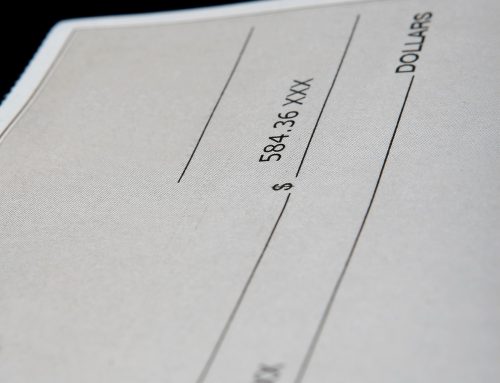Posted on Mar 25, 2014
If you recall, in $HOW ME THE MONEY, we introduced you to the Aged Trial Balance report (ATB), the report your collections department uses to collect money.
Most small businesses will use this report for collections and that’s it….it’s not! There’s other ways this report can be used….let’s explore some of them.
Protect Your Company
When I worked in the corporate world, we would use the ATB report to create what we called our Accounts on Hold list. This was a list of accounts with past due balances owing whose credit privileges had been “put on hold”. The account remained on hold until such time the past due balance was paid. Once paid, the name was removed from the list and on account privileges were reinstated.
If an “on hold” customer placed an order, the sales staff would have to get the OK from collections before they could release the goods.
That’s where the “fun” would begin….
Sales vs. Collections….
Ding…Ding…
In this corner, we have…..
Fred from Sales: “Hi Jane, Overdue Inc. has just placed an order for $500.00. They’re on the hold list, is it OK to release?”
And, in this corner, we have….
Jane in Collections: “NO!!! I’ve been told 3 times the cheque is in the mail and I’m STILL waiting for it. They can’t have anything until we get their payment.”
Fred: “Joe Blow at Overdue Inc. told me we’ll have a cheque next week for the full amount.”
Jane: “Then they can get their goods next week! The amount owing is over 90 days old and they’ve lied 3 times about a cheque being mailed. No dice.”
Fred: “Ya but, I’ve been dealing with Joe Blow for years….every time he says he’ll bring in a cheque, he does. His word is good; I trust him. They’re in a real bind, they need these goods….
Sales and collections will often butt heads. It’s tough…the sales department is paid to sell while collections will maintain a sale isn’t complete until it’s paid for!
So….When using an Accounts on Hold system, there needs to be some give and take between the sales and collection departments. They need to work together and understand that one wouldn’t be there without the other.
Bad Debt, Bad Debt!
Another list we would generate using the ATB report was our doubtful account list. These were accounts that were either in for collection, were in receivership, had skipped town, were having cash flow problems….etc. etc. etc. In a nutshell, these were accounts we weren’t expecting to collect, they were considered our bad debts. Your accountant or bookkeeper will keep track of this either on a monthly, quarterly, or annual basis.
Let there be Balance…
Another part of our month end process was to make sure the ATB report balanced to the Accounts Receivable total on our Balance Sheet. Here’s how that works….
Imagine if each of your customers had their own account in the General Ledger (by that I mean, every customer with a balance owing would appear on your Balance Sheet). That would be ugly!! And, endless!! For this reason, each of your customer’s balances is tracked in what’s called a subsidiary ledger (the ATB report). All of the balances in this subsidiary ledger are then rolled up into one account called a control account (in this case, the Accounts Receivable account). The control account is the only account that appears on the financial statements. Because what’s recorded in the subsidiary ledger must also be recorded in the control account, the total of the two must balance. Your accountant or bookkeeper should be making sure of this at the end of every month.
Speaking of accountants….
If your accountant is performing a year end audit, they’ll also go through your Aged Trial Balance. They do what’s called an Accounts Receivable Confirmation test. This is done by mailing a form letter (and sometimes a statement detailing the invoices and amounts owed to you) to a handful of accounts selected from the ATB report. The letters will say something along the line of “In connection with the audit of ABC Co. please confirm your balance owing of $X,XXX as at December 31, 20XX. If you are not in agreement with this amount please provide details below.” What your accountant is doing is verifying the existence of your accounts receivable and the accuracy of your records.
And Banks…
Bankers also have a use for your ATB report, if your small business has a line of credit or loan with the bank, you may need to send a copy of the ATB to them each month. They want to get paid, so they’ll make sure you’re staying on top of getting paid too! Further, they’ll often only extend credit based on a percentage of the most current amounts owing. In other words, you won’t be able to borrow on any amounts owed to you beyond a certain number of days.
The primary use of the ATB report will always be for collection purposes. If you haven’t already, check out $HOW ME THE MONEY and learn how your collections department can best use this report.
Karen







